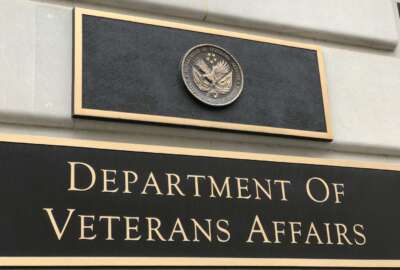Berry’s tenure marked by accomplishments but much work remains for next director
OPM Director John Berry will leave his position today after four years on the job. Federal News Radio surveyed federal HR experts to develop a list of Berry's a...
wfedstaff | April 17, 2015 4:53 pm
John Berry ends his tenure as the director of the Office of Personnel Management today after four years and a multitude of accomplishments.
Berry announced at the Chief Human Capital Officer’s Council meeting on April 2 that he would not seek a second four-year term. Yesterday, he sent his official farewell email to employees. By law, the OPM director would need to be re-nominated by the president to continue to serve. 
But throughout it all, Berry has played defender, cheerleader and bulldog against the constant barrage of morale-busting attacks.
Federal News Radio surveyed federal employee unions, management organizations, good government groups and former federal chief human capital officers for their analysis of Berry’s biggest accomplishments and the major issues that the next OPM director — whoever that may be — will need to pay the most attention to.
We want to hear what you think about Berry’s tenure. Send us an email or leave a comment on this story.
Top Accomplishments
- Reinvigorating the Labor-Management Council, which included pilots testing the Goals, Engagement, Accountability and Results (GEAR) approach to change how supervisors and employees work together and appraise performance.
- Being an outspoken advocate for having a well-qualified, trained and supported federal workforce. He led the launch of HR University and focused on leadership training.
- Making measurable progress in reducing the retirement claims backlog by developing a plan to include more staff and better technology.
- Leading the effort to reform the federal hiring process and use resumes instead of KSAs. As of fiscal 2011, agencies reduced the time to hire to 105 days from 122 days.
- Implementing the new internship program, Pathways, and focusing on diversity among minorities, veterans and people with disabilities. In 2011, more than 28 percent of all new hires were veterans, the highest ever.
- Refocusing efforts to improve the Senior Executive Service by developing a common, governmentwide appraisal system and emphasizing the value of a candidate development program.
- Expanding and promoting telework, especially during weather-related events. Though OPM struggled with clear and concise closing language, more employees worked away from the office than ever before — 25 percent of the eligible workforce in fiscal 2011.
- Increasing the number of eligible participants where he could under the Federal Employees Health Benefits Plan (FEHBP). Last summer, OPM issued a final rule to provide child-care subsidies to children of same-sex domestic partners. The agency included temporary firefighters and tribal nations in the plan as well.
- Improving the timeliness and value of the Employee Viewpoint Survey. OPM extended the number of employees it surveyed to all 1.8 million.
To-Do List
- General Schedule classification reform. It hasn’t been updated since 1949.
- Phased retirement regulations were supposed to be done in January. OPM continues to finalize the draft version.
- USAJobs.gov has improved, but needs more features to improve the ease of its use.
- Continue to improve retirement processing time and reduce the backlog. As of early April, OPM exceeded its processing goal in 12 of the last 15 months.
- Rationalize and simplify the employee complaint and appeal process.
- Make OPM a customer-focused, results-oriented, world-class talented organization. The agency launched the Results Only Work Environment (ROWE) pilot in 2010, but after the test ended hasn’t decided how to move forward with it.
- Recruit the next generation of public servants and make government both “cool” and attractive despite continued attacks by Congress and pay freezes.
- Address succession planning and knowledge management on a governmentwide scale to deal with the ever-increasing number of federal employee retirees.
- Continue to increase the overall competency of the federal workforce through training and standards. OPM released draft competency models in April 2012.
Copyright © 2024 Federal News Network. All rights reserved. This website is not intended for users located within the European Economic Area.
Jason Miller is executive editor of Federal News Network and directs news coverage on the people, policy and programs of the federal government.
Follow @jmillerWFED






